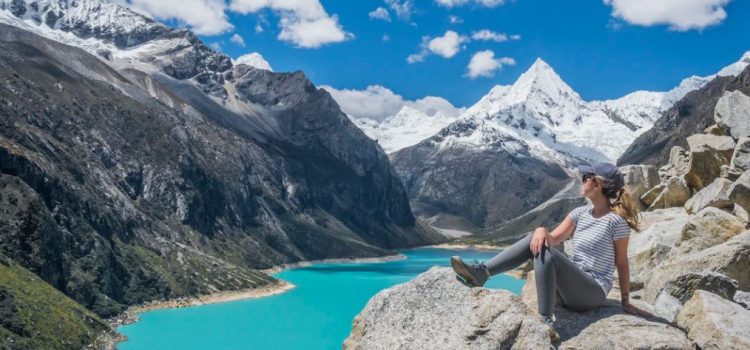
This is a free excerpt from one of Shortform’s Articles. We give you all the important information you need to know about current events and more.
Don't miss out on the whole story. Sign up for a free trial here .
How much pollution does the tourism industry actually cause? Is it possible to travel the world without polluting it?
When we travel, we’re supposed to “leave nothing but footprints,” but tourism’s carbon footprints can wreak havoc on the planet. Thankfully, there are ways to travel responsibly and to give back to local communities, wildlife, and the planet.
Here are some tips for seeing the world without harming it in the process.
Traveling Produces 8-11% of Global Carbon Emissions
The tourism industry is bouncing back after a tough couple of years during the Covid-19 pandemic.
This is great news in some ways: Tourism is important to the economy as it opens up business opportunities and creates jobs. It also allows people to get to know other cultures and, on an individual level, it can improve mental, physical, and emotional health.
However, the travel boom also comes with a downside: According to studies, the tourism’s carbon footprint is responsible for 8-11% of global carbon emissions, the greenhouse gases that lead to climate change.
Tourism’s Effects Beyond Carbon Emissions
Aside from contributing to carbon emissions, traveling can also degrade environmentally and culturally important sites. Many vacation hotspots suffer from overtourism, where having too many visitors leads to problems like increased traffic, pollution, and waste. Additionally, overtourism forces locals to alter their lifestyles—or displaces them altogether—as a result of overcrowding and increased housing prices.
Changes will have to come from key players and policymakers: Airlines and cruise companies, for example, can switch to more sustainable fuels, and local governments can address overtourism by limiting the number of visitors to popular spots. But such changes may take years. Here, we’ll discuss some things you can do in the meantime to make tourism more sustainable.
Destination: Consider Where and When
You can start traveling more sustainably by opting for eco-friendly destinations. Instead of vacationing in crowd favorites like France and Hawaii, choose places that are making efforts to protect the environment. An under-the-radar destination is Ljubljana, Slovenia, one of Europe’s greenest cities. Not only does it have a 12-hectare car-free zone, a field-to-table approach to food production, and sustainability certification programs, but it also has the architecture, history, and markets that draw tourists to more popular neighboring countries.
Support Places in Recovery
Consider visiting places recovering from disasters to help them get back on their feet. Your support can help locals and businesses that are reeling from the effects of reduced tourism. For example, tourism helped Puerto Rico recover after a hurricane in 2017.
Summer Isn’t the Only Time to Travel
If you must stay on the beaten path, consider traveling during off-peak seasons. You’ll avoid the crowds, score cheaper rates, get more attentive service, and help tourism staff stay afloat during lean months. You’ll also have experiences that travelers don’t have access to in the summer months.
Transportation: Planes, Trains, or Automobiles?
To get an idea of your carbon footprint when you fly, an economy class return flight from New York to Paris emits about 1,411.50 pounds of CO2 per passenger—that’s about 14% of an average person’s carbon footprint per year. The number is as much as three times higher if you’re flying business class (even more for first class) since the space you take up is the equivalent of several seats in coach.
It’s ideal to take a train instead of a plane—at 0.21 (Eurostar) to 1.4 ounces of carbon emissions per passenger per kilometer traveled, trains leave a smaller carbon footprint than domestic flights (4.69 oz), cars (1.52-6.03 oz, depending on number of passengers), and buses (3.67 oz).
If flying is your only option, minimize your carbon footprint by choosing a seat in economy class and flying direct.
What About Cruise Ships?
Is taking to the sea a better option than taking to the skies? Some experts say no. One study found that cruise ship passengers’ carbon footprint is three to four times greater per kilometer than airline passengers’. Added to that, cruise ship passengers sometimes have to fly to the port where they’ll board, increasing their total emissions.
Furthermore, as one of the fastest-growing sectors in the tourism industry, cruise ships contribute to overtourism as they offload thousands of passengers at every stop—the problem is so severe that some cities have even banned cruise ships from docking.
Make Up for Your Emissions With Carbon Offsets
One way to scrub away your carbon footprint is to buy carbon offsets—the money funds projects that fight climate change, such as reforestation and landfill management schemes. And it doesn’t cost much: Offsetting a 12-hour economy-class flight will set you back about $15. Just be sure to send your money to a legitimate project. Some airlines offer carbon offsets when you purchase a ticket, but you can also compute your carbon footprint and find United Nations-certified projects here. But keep in mind though that carbon offsets don’t make up for 100% of emissions.
Accommodations: Think Green
Look into staying at eco-friendly hotels, which have a minimal impact on the environment and are conscientious of the local culture. Websites like bookdifferent.com have a list of recommendations for certified green accommodations. But sometimes, eco-friendly options may not have certifications: Small businesses may not be able to afford certification processes, and sustainability may be second nature—rather than a buzzword—to indigenous communities.
Activities
If you have activities to check off your bucket list, be sure to do your research. For example, if you plan to go whale watching, read up on the rules of your chosen destination beforehand so you’ll know if your tour operator is following regulations to keep whales safe.

Want to fast-track your learning? With Shortform, you’ll gain insights you won't find anywhere else .
Here's what you’ll get when you sign up for Shortform :
- Complicated ideas explained in simple and concise ways
- Smart analysis that connects what you’re reading to other key concepts
- Writing with zero fluff because we know how important your time is







Teşekkürler